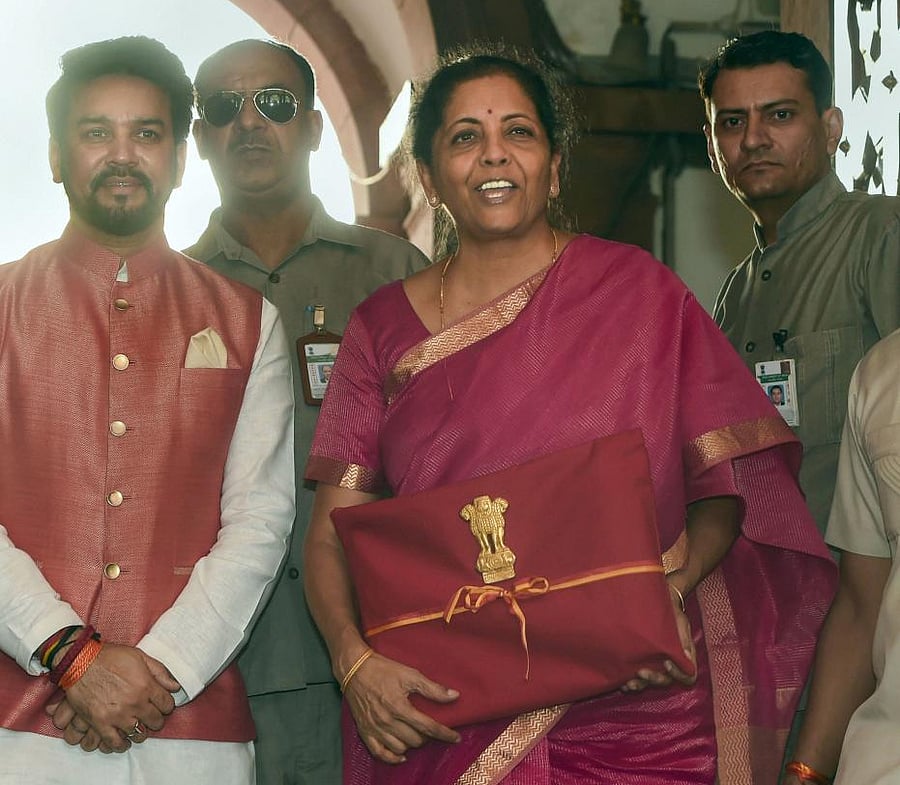
The Union budget speech invites a lot of attention in India. However, it is far more useful to look at the budget statements that get released on the day the speech is read out in the Parliament. Comparing the vision articulated in the budget speech with the promised allocations in these statements separate the wheat from the chaff.
Here’s an analysis of one such statement called the Outlay on Major Schemes (https://www.indiabudget.gov.in/doc/Budget_at_Glance/bag7.pdf ), which lists down all the major programmes being financed by the Union government. Analysing the allocations made in this statement gives a preview of the real priorities of the Union government.
A small bit about the statement itself. The major schemes are classified into three categories: Core of the core, core, and central sector schemes. The first two are together known as centrally sponsored schemes (CSS). Unlike a central sector scheme which is fully financed and implemented only by the Union government, a CSS is implemented by State governments but is financed by both Union and State governments.
The first point to take note in the 2019 budget is that no new schemes have been proposed under the CSS category. New Union governments are inclined towards launching new schemes but this government has not moved away from the recommendations of a Sub-Group of CMs in 2016, which advised that the number of CSSs should not normally exceed 30. This is a positive step because the proliferation of such schemes goes against the spirit of federalism in the Constitution. State governments are required to provide matching contributions for such schemes although they have no role in designing them. Diverting funds into CSS makes it difficult for the States to provide the required level of budgetary support from their own programmes.
Second, a sectoral analysis provides several insights on the priorities of National Democratic Alliance (NDA) 3. Particularly, the government’s stated focus on health and healthcare is hardly reflected in the budgetary allocations. The flagship CSS—National Health Mission (NHM)—saw a paltry 10 per cent rise over the budgeted estimates last year. In September 2018, the PM had also launched a health insurance scheme called the Ayushman Bharat Jan Arogya Yojana. This scheme envisaged providing a benefit health cover of up to Rs 5 lakh for 50 crore Indians. The bold vision is barely reflected in the budgetary allocations though: Rs 6,500 crore for 2018–19 is by no means sufficient to cover a substantial portion of the targeted beneficiaries.
The picture is much better in the education sector. The flagship National Education Mission has been given a 19 per cent raise over the last year’s budgeted figure while the allocation for the Mid Day Meal schemes has increased by 10 per cent. Allocation for Anganwadi services has also increased substantially indicating that school education has been given priority in this budget.
Next, there is no major change in the allocation for this government’s largest Centrally Sponsored Scheme — the National Rural Employment Guarantee Scheme (MGNREGS). Clearly, successive United Progressive Alliance and NDA governments view this scheme as a means to manage rural distress even if their rhetoric on the utility of MGNREGS is quite different in public.
The drop in allocation for Swachch Bharat Mission is accompanied by an almost equivalent increase in the allocation for the National Rural Drinking Water Mission. This gives a glimpse into the government’s plan: The newly formed Jal Shakti ministry will now focus on water access and conservation while sanitation will become a secondary function.
The allocation for the Smart Cities Mission saw only a meagre increase. Creating 100 new cities was a worthy goal that NDA 2 began with but the allocations over the last six years betray this vision. It’s time for the government to scrap this programme or re-evaluate the design parameters.
Finally, one of the better performing CSS — PM Gram Sadak Yojana—received a 22 per cent hike indicating the government’s focus on improving rural connectivity.
Then there are a total of 91 major central sector schemes — designed, financed, and implemented by the Union government alone. An analysis of this category tells a sobering story. The urea subsidy is budgeted to increase by nearly 20 per cent and the food subsidy by 8 per cent over the 2018–19 revised estimates. This galloping subsidy bill indicates the government’s inability to cut wasteful expenditure. Re-capitalisation of PSU banks (Rs 70,000 crore) and budgetary support for railways (Rs 68,000 crore) are some other big initiatives the government is betting on. We have seen this bail-out-the-government-agency movie play out many a time; now it’s for this government to show why the ending will be any different this time around.
Finally, just a glance at this budget statement will force the reader to notice that the Union government is still running way too many schemes. Ideally, it should run no more than a handful of them. By closing down many schemes which have thinly spread funding commitments, the Union government can increase allocations for key meritorious services such as health, education, water supply, and road infrastructure. This change would be the true test of the slogan minimum government, maximum governance.
(Pranay Kotasthane is a Fellow at the Takshashila Institution, a centre for research and education in public policy)
The views expressed above are the author’s own. They do not necessarily reflect the views of DH.